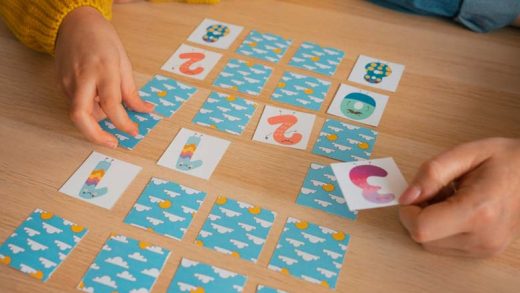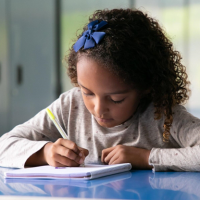Clay modelling can foster your kids’ creativity and provide many developmental benefits for them. From helping them improve their fine motor skills to shaping their ideas into physical forms, the fun activity of clay modelling should definitely be a part of their growing days.
Your role as a parent is immense here. Not only must you encourage your kid, but you also take part in the clay modelling tasks actively. This guide will take you into a world of magical clay modelling, highlighting its thrills. It will also provide helpful advice on how to start this creative adventure with your child.
So, let’s discover how clay modelling for kids may help you unlock your child’s creative potential!
Understanding Clay Modelling: An Integrated Approach
The skill of creating forms and figures out of clay is known as clay modelling. Children get pleasure and success from their works due to their unique ability to express their thoughts and emotions in three dimensions. But above and beyond its obvious attraction, clay activity is a sensory-rich activity that stimulates many aspects of a child’s growth.
Fascinating Clay Modelling Activities for Kids
- Caterpillar Creations (li)
- To begin this clay activity, use white paper to form the shape of a leaf.
- Ask your youngster to use crayons to colour the leaf.
- Combine green and brown playdough to make the body of the caterpillar.
- Help your youngster roll little balls of clay into a design on the leaf by showing them how to do so in alternating colours.
- Add a cheerful mouth below and black playdough eyes.
- For the antennas, use short sticks wrapped in red playdough.
- To finish the tableau, place the clay caterpillar on the paper leaf.
- Cone Creamy Desserts
- Make cone forms out of old paper towel rolls.
- Allow your child to adorn the cones with different coloured playdough to symbolise different types of ice cream.
- Sprinkle small, multicoloured dots on top to make sprinkles.
- Take turns serving up imaginary delicacies as you role-play as ice cream sellers and shoppers.
- Creative Cookie Cutter Creations
- Use a rolling pin to make the playdough flat.
- Give your kids some cookie cutters so they can make shapes.
- To save the forms for the next playtimes, let them air dry.
Create cute caterpillars crawling on leaves by shaping ordinary clay balls into them! Here is how to do it:
Who is not a fan of ice cream? This activity lets your youngster make their own visually appealing ice cream cones.
Try this simple cookie-cutter clay modelling project to spark your child’s imagination. The shapes can include stars, hearts, and animals.
Clay Modeling’s Benefits for Cognitive and Emotional Health
Clay art for kids offers a wealth of cognitive and emotional benefits that can nurture your child’s growth. They are as follows:
- Strengthening Fine Motor Abilities
- Fine-tuning Motor Skills: Your child’s hands and fingers become nimbler and more precise as they work with clay, strengthening these muscles.
- Hand-eye coordination: Helping them form the clay with their hands improves hand-eye coordination, which is necessary for writing and drawing.
- Independent Finger motions: Your kid may develop finger motions via clay-working, which will help them in other hobbies that call for deft hand control.
- Strengthening Imagination and Creativity
- Creativity: There are no restrictions when working with clay. Your child may shape it into any shape or form, encouraging imagination and creative problem-solving. Kids can use clay to develop their artistic abilities.
- Critical Thinking: Kids visualise the final product and plan the methods to attain it. The task of planning and carrying out their creations involves critical thinking abilities.
- Multisensory stimulation: Clay art for kids stimulates your child’s senses, allowing them to see and understand their surroundings more clearly and igniting their imagination.
- Encouraging Problem-Solving Techniques
- Analytical Thinking: Your child gains the ability to assess a situation, find answers, and shape a particular form when presented with a difficulty.
- Trial and error: Your kid will learn from mistakes and adapt their approach as they try out various tactics, which will help them become resilient and persistent.
- Logical Reasoning: Your child will learn to think strategically and logically as they assess the pros and cons of various solutions and come to well-informed conclusions.
- Promoting Social Interaction and Emotional Expression
- Therapeutic Outlet: By enabling your kid to express their feelings via tangibly created objects, clay helps to foster emotional awareness and control.
- Social Bonding: Working together on clay projects develops collaboration, communication, and teamwork, which improves social skills and gives your kid a feeling of community.
- Icebreaker Activity: Creating new friendships and tearing down barriers in groups may be achieved through clay sculpting.
Clay modelling benefits your child’s hands and brains and is a form-making exercise.
The world of clay sculpting is your child’s imagination. Here is the reason:
Overcoming obstacles is a critical component of clay art for kids, in addition to sculpting.
Clay modelling can be a medium for social interaction and emotional expression and not merely a solitary hobby.
Clay modelling has many advantages for kids, including improved academic achievement, emotional expressiveness, and cognitive growth. Why not take advantage of this chance to take your child on a creative adventure? There are countless options when working with clay!
At Kangaroo Kids International School, we plan our curriculum thoughtfully so that kids can have fun while studying. This also helps them develop holistically. To learn more, contact us today!









